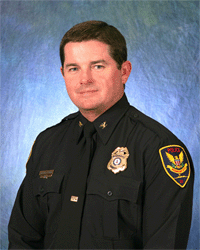
In the first few weeks of the new year Roanoke City has already matched last year’s atypical low number of murders – two – when two men were gunned down at an after hours party at the former Obenshain’s Nursery on Shenandoah Avenue. Police Chief Chris Perkins referred to it as a “nip joint” where people were gathered in the wee hours of Sunday morning, January 4.
Alcohol and guns don’t mix very well and the result was deadly. Getting information from the people on hand as to who may have been involved was an issue in the days after the fatal double homicide, as well. Perkins has an issue with that. Then, two days later just a few blocks away on Shenandoah Avenue there was another, non-fatal shooting.
That part of Roanoke City is identified as “Zone 4” in the way the police department splits up the city. Crime is analyzed by district and the resources needed are allocated accordingly said Perkins, several days after the two shooting incidents.
So is Roanoke a safe place to live, work and play? “Human beings respond to crisis – it’s a tragedy [what happened],” said the chief, “but you’ve got to put it in perspective. If you’re not hanging out in an illegal ‘nip joint’ at four o’clock in the morning … then you probably don’t have to worry about being the victim of a murder in the city.”
Nip joints can pop up anywhere so stopping them all isn’t feasible. “We respond when we find out,” said Perkins. Having a private party is legal – charging a fee for an after hours party where alcohol is served isn’t.
Not to say there aren’t crimes in other parts of Roanoke – there is, like in Zone 2 where Valley View Mall is. Shoplifting is an issue there; most culprits come from outside the city limits, noted Perkins. But it’s Zone 4 in northwest Roanoke City where much of the rough stuff occurs – 27 of 37 shooting incidents in the city happened in that zone in 2014. Northwest is also predominately home to a minority population and the city’s largest concentration of African-Americans.
“In this climate where people believe we are policing based on race that is absolutely false. Our police officers police based on the data.” Perkins said Zone 4 shows up in many of the statistics for certain crimes, often violent, and that’s why his officers are often concentrated there. “We do the best we can with a finite force that quite frankly is strained [at times].”
Perkins said requirements that officers also engage in community policing as well – showing up at neighborhood watch and civic league meetings – is often taxing them to the limit. But he believes in the community policing model as a way to draw law enforcement closer to the citizenry. Those efforts “are bearing fruit,” said Perkins.
“If you don’t like your world, look at yourself first and make changes,” Perkins adds. He doesn’t know what this year holds murder-wise, but insists the community has to say, “Enough is enough. They have to step up and do their civic duty. That sometimes means picking up the phone and saying, hey, this is what I know. That doesn’t make you a bad person, in fact it makes you a good person.”
Doing the right thing is more important that not “snitching” said Perkins, referring to the Shenandoah Avenue murders and the lack of information supplied by potential witnesses. “Somebody didn’t deserve to die that night – no matter what they were doing. Do the right thing.” Perkins said he can’t guarantee anyone’s safety, but insisted the city can become safer “if people start making the right decisions.”
By Gene Marrano


